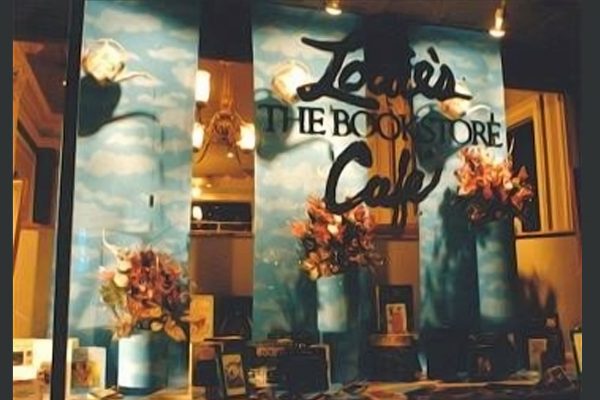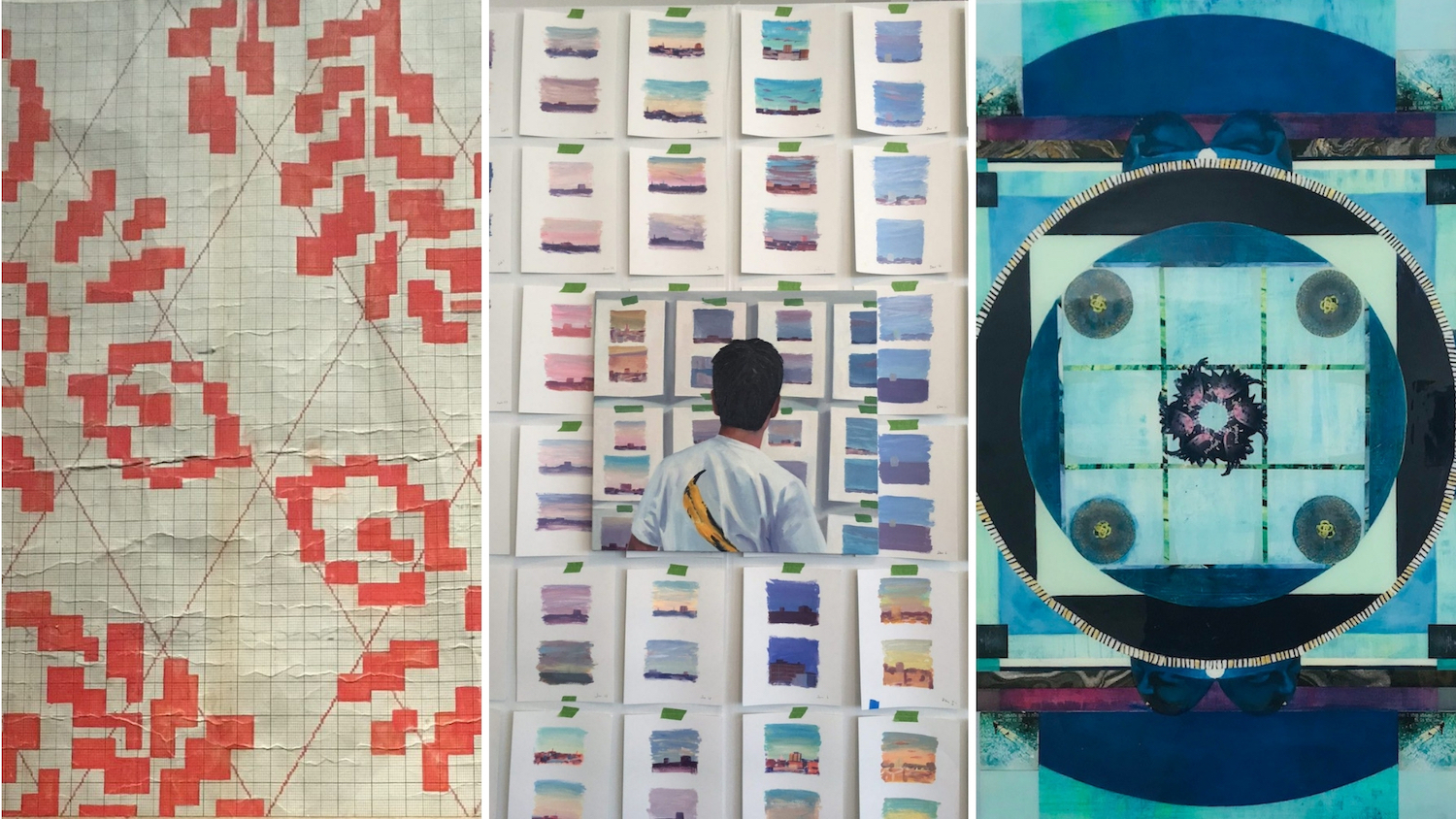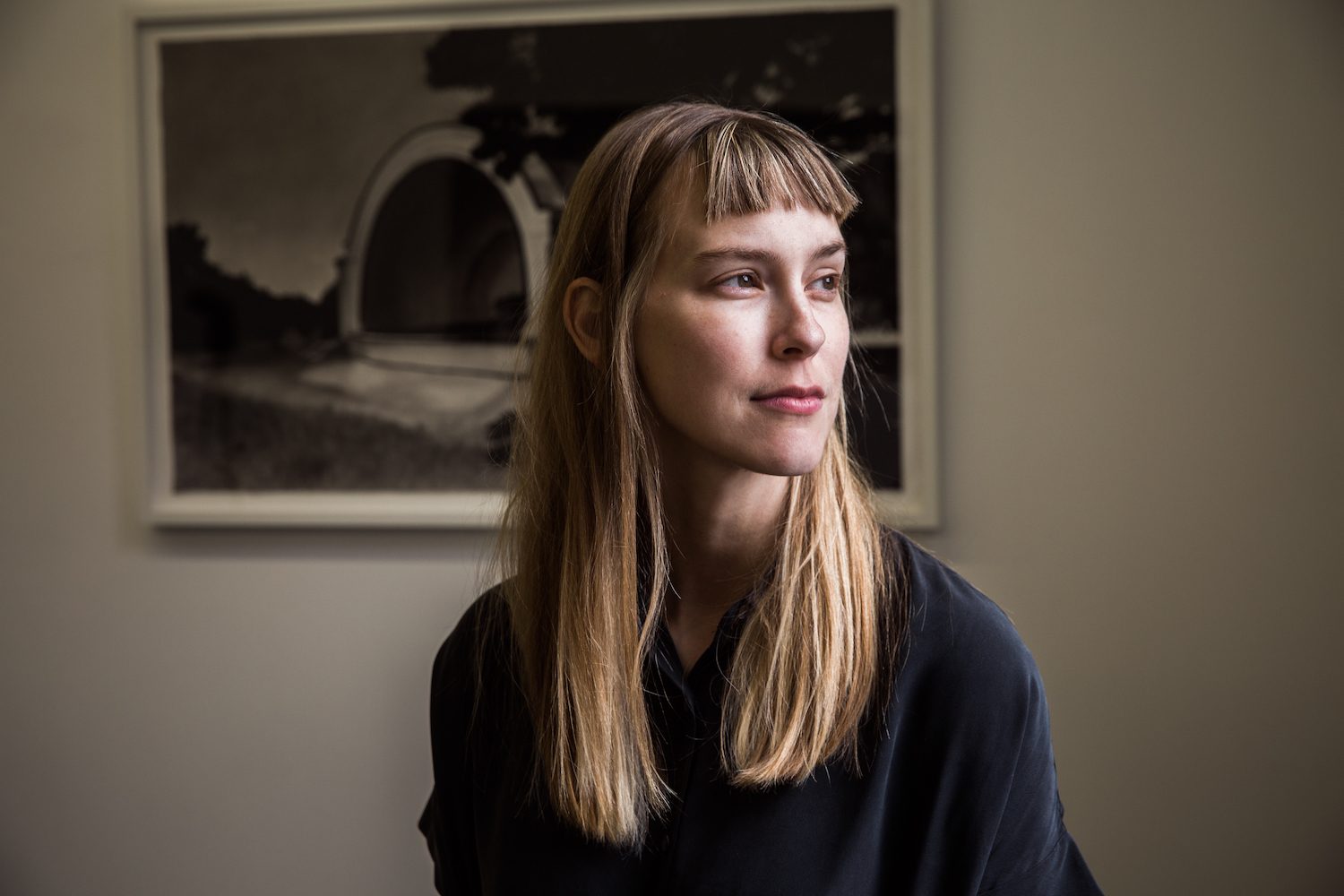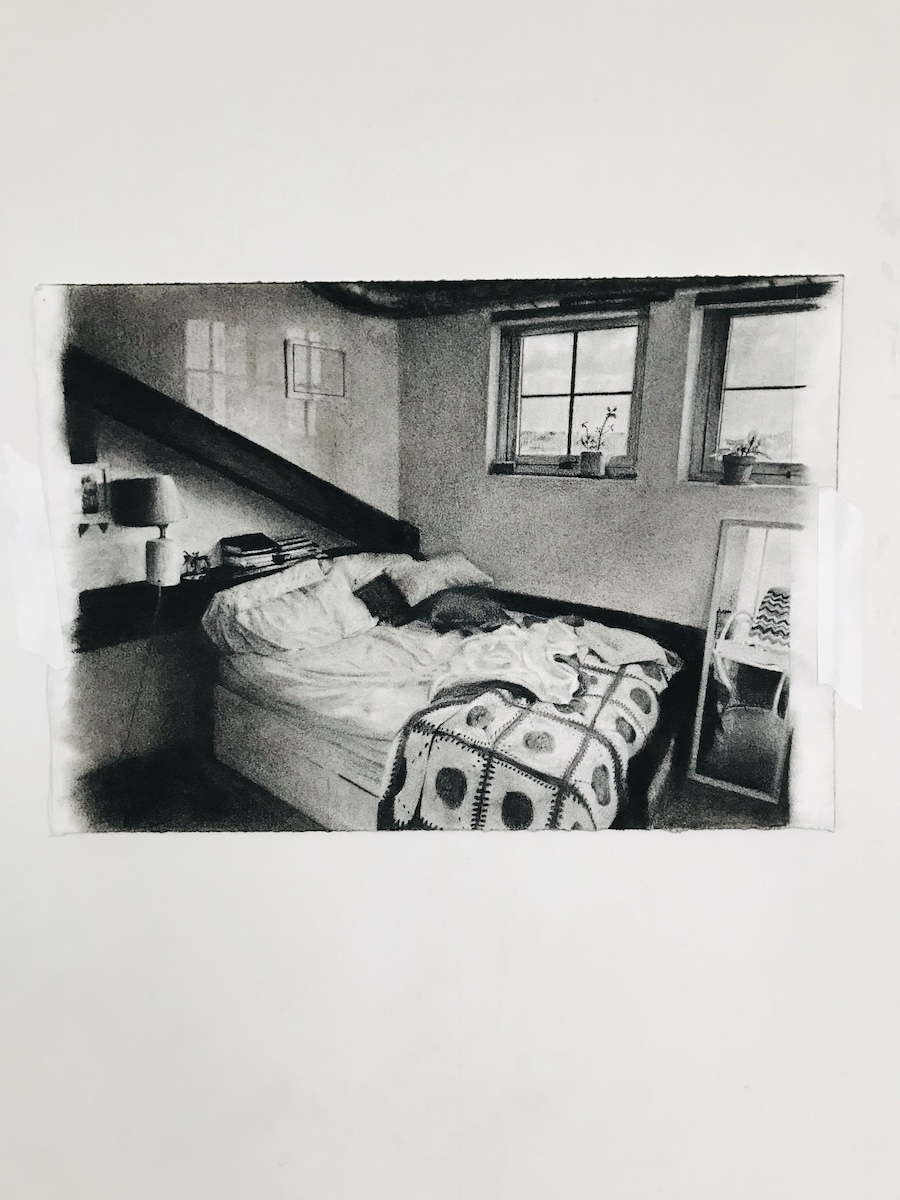A studio visit with Erin Fostel, one of two winners of the 2018 Baltimore City Artist Travel Prize
The value of travel is especially rich for artists who convert lived experiences—sights, smells, feelings—into their work. In Baltimore, the historic Municipal Art Society, which has existed to promote public art and “beautify the city” of Baltimore since 1899, puts these values into practical use with a recently re-designed annual artist travel grant.
Although the organization’s contributions span over a hundred years, MASOB created the program in 2016 to fund a proposal-based travel grant for a Baltimore-based artist, as well as a public art show in a municipal exhibition space. Now partnered with BOPA, which facilitates the application and selection process, the Municipal Art Society of Baltimore City Artist Travel Prize is $6,000, and so far has funded artists Stephen Towns in 2016, Nate Larson in 2017, and in 2018 Erick Antonio Benitez and Erin Fostel.
Fostel will travel to Japan to research urban and ceremonial architecture and Benitez will go to the Amazon city of Iquitos. In both cases, the artists will conduct research, take photos, and make drawing studies, field recordings, and video footage, which will be used to create new bodies of work once they return. The artists will translate their research into works of art which will then be shared with a Baltimore audience.
I visited Fostel in her Mayfield studio to talk about the impact of travel upon her work, the application process for this particular grant, and plans for her three weeks in Japan. We began by looking at recent work, large charcoal drawings of Monument Valley, on the Arizona-Utah border and Zion National Park in Utah. This was the first trip Fostel had ever taken specifically to generate new subject matter for her drawings.
“You can always travel to museums to see art, but I’d never traveled to make art before,” says Fostel, who photographed the landscape in order to make drawings once she returned to her studio. “I knew I wanted to challenge myself to capture different kinds of landscapes, a totally different world than here. I had never drawn such deep space or the texture of these kinds of rocks before. These drawings challenged my technical ability to translate what I see onto paper with charcoal.”
Under Fostel’s steady hand, craggy red rocks and majestic vistas come into focus in velvety black and white charcoal, the artist’s medium of choice. Unlike typical tourist photos, Fostel wanted to capture her own landscape angles, some deep and monumental but others more intimate and esoteric. Unlike a traditional landscape artist or photorealist, Fostel’s drawings of landscape and architecture are designed to communicate the mixed feelings that each place inspires. Although all of her drawings can be considered beautiful and technically accurate, Fostel’s most successful works are often mysterious and haunting reminders of the human beings she chooses not to depict.
After she came back and worked on her first large drawing from the series, a commissioned work of Zion National Park viewed from atop Angel’s Landing, she realized that her fastidious and detail-oriented technique needed to become more inventive and painterly to translate deep space.
“My marks can only be so big, so this was a challenge,” says Fostel. “Capturing all those nooks and crannies would have been too stiff and static, there was no way I would want to draw every single tree. But I am trying to communicate what the rock—or thousands of trees at a distance from the top of a mountain—feel like. I had to work much looser than I had on my architectural drawings and solving these problems was as much a discovery as the drawing itself was. And then I take what I learned from this drawing into another.”


After four drawings, Fostel felt finished with this series and has moved on to new subjects. The timing of this Utah trip was helpful in composing her ideas into a compelling application for the Municipal Art Society travel grant.
“I like this concept of traveling but I never travel,” Fostel admits. She says her motivation for applying for the grant came from a studio visit with fellow artists Jackie Milad and Melissa Webb. “I had all of these photos printed out in my studio, of cathedrals and old megaliths in Mexico, England, Egypt,” she remembers. “But I hadn’t been to any of those places. Jackie said I needed to travel and see this stuff. And I thought that sounded interesting.”
After deciding to apply for the grant, Fostel first had to figure out where she wanted to go. “Six thousand dollars is a significant amount, and I wanted to make it a substantial trip. It was a challenge to think about where would be the best place for me to go. What did I want to see and where did I want to go? And, if I’m traveling alone, where would I feel most comfortable as a woman?”
Fostel said that she had always wanted to go to Japan, and had applied for a MICA travel grant as a graduating senior, but didn’t win it. Years later, when the opportunity to apply for the travel grant came up, she decided to try again.
But how did she convince the prize’s jurors to send her to Japan? “This is where all my research came in,” she says. “I minored in Art History at MICA and I took a lot of classes with Professor Jane Elkinton there, on a wide range of Japanese subjects, from ancient to contemporary art, the tea ceremony, and Japanese movies.” She pulled out her art history books and discovered an unexpected connection to the work she had been making in Baltimore.
“My Baltimore series is about loss, and concepts of presence and absence through architectural forms,” she says. “And in Japan, [people of] the Shinto religion build shrines entirely for the spirits they worship. These are not built for people, but for spirits.” The concept of an architectural space built for intangible beings felt like a direct correlation to the drawings she had previously made, in which different Baltimore buildings functioned as vessels for grief, after the loss of her father, an architect.
More research revealed that Japan, like Baltimore, has a huge vacant house problem. With a population in decline, there are significant problems with abandoned properties and confusion over ownership and upkeep. She hadn’t realized that housing values were so low in some parts of Japan because of a lack of demand. When she wrote her proposal, she included a plan to visit smaller towns in order to view a variety of abandoned homes.
Part of the application included an agreement to exhibit at one of the exhibition spaces that BOPA manages, so she requested School 33 in her 15-minute presentation to the board, which selects the winners. Fostel said that typically the organization sponsors an annual public art prize, but didn’t this year, so they put the money toward a second travel grant.
This is the first grant Fostel has won, and she says it seemed flexible and open-ended, in terms of expectations and responsibilities.
Fostel has booked her tickets to Tokyo and is looking at a variety of Airbnbs in Kyoto, Hiroshima, Naoshima, Nira, and Ise, a small city with many shrines. She will be there for three weeks, and looks forward to experiencing a culture different than American culture, learning about the traditions, rituals, and human interaction, as well as the architecture.
Fostel’s system of visiting new places, considering their unique architecture, and then transforming them through photography, editing, and drawing continues to evolve and to be shaped by the territory she covers. That she was able to explain her process and draw direct parallels to travel was essential in making a valid proposal for the MASOB Travel Prize Committee.
Although Fostel is clear in her plans and purpose, she does not yet have a plan for the specifics of the art she will make once she returns to Baltimore. “I don’t know exactly what I’m going to draw,” she says. “I’m staying open to what happens.”
She will spend most of her time taking photos and making simple pen sketches in her sketchbook.“Right now, my vision for what I want to draw there is architecture,” she says. “But even as I write the proposal I don’t know what that actually translates to. Interiors? Maybe I get there and something else will speak to me. Whatever it is, I look forward to bringing back my vision to a Baltimore audience.”

Header photo by Ana Tantaros of Side A Photography, additional photos by Cara Ober.
The Municipal Art Society of Baltimore was founded in 1899 as part of the City Beautiful movement. It is one of only two remaining societies to be operating under its original charter “to provide sculptural and pictorial decoration and ornaments for the public buildings, streets and open spaces in the City of Baltimore, and to help generally beautify the City.” Artistic contributions to the City span more than one hundred years. In 2016 the MASOB embarked on a path to provide new opportunities to Baltimore artists and art places within the City, including this Artist Travel Prize and an annual Public Art Prize.
The Baltimore Office of Promotion & The Arts (BOPA) is a 501 (c)(3) nonprofit organization, which serves as Baltimore City’s arts council, events center and film office. By producing large-scale events such as Artscape, the Baltimore Book Festival and Light City, and providing funding and support to artists, arts programs and organizations across the city, BOPA’s goal is to make Baltimore a more vibrant and creative city.










